“…appreciation of a garden lies not with the gardener but with the observer of the many gardens I have cultivated.”
C.D. Deshmukh, The Course of My Life.
Deshmukh Chowk
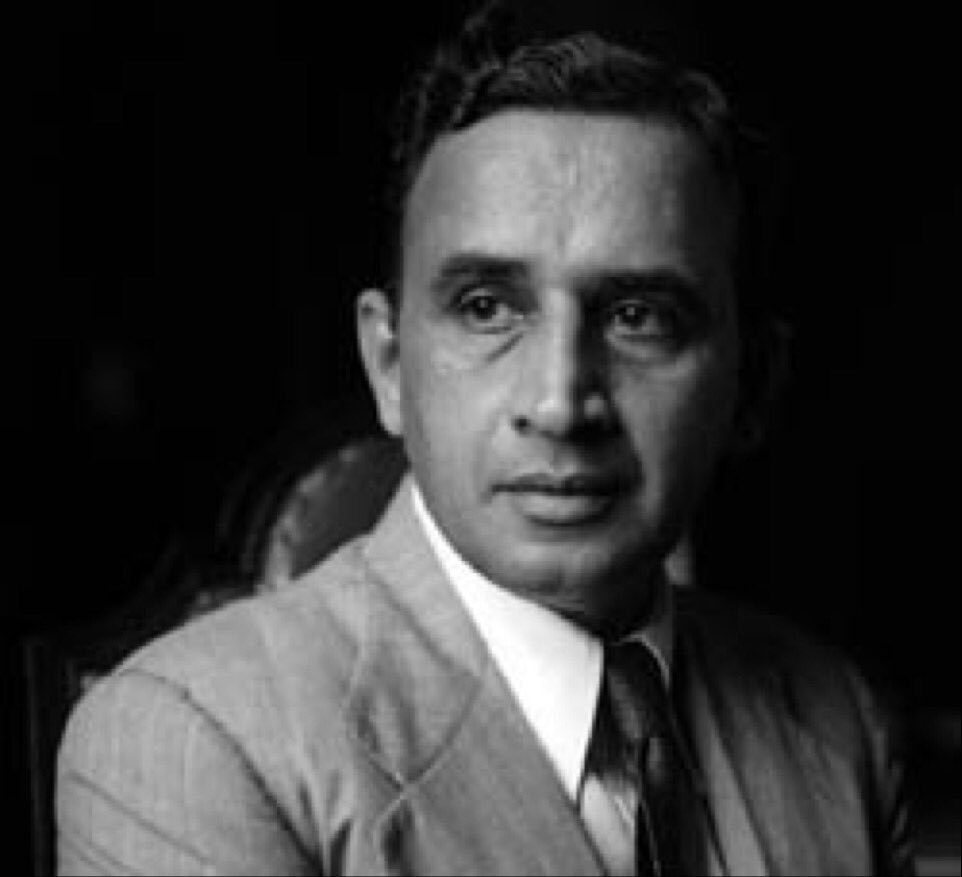
If one were to walk down from Churchgate in South Mumbai, towards Mantralaya, along the Jamshetji Tata Road, the third round is Deshmukh Chowk. It is named after Chintaman Dwarakanath Deshmukh, the third Governor of the Reserve Bank of India and India’s third Finance Minister. There could be two claimants to getting the roundabout so named after Deshmukh.
Yogakshema or Bank House?
The Head Office of the Life Insurance Corporation, Yogakshema, is the second building from the roundabout towards the sea. As Finance Minister, nationalising life insurance was a pet project for Deshmukh. At the time of this writing, the history page on LIC’s website makes no reference to Deshmukh. But, Deshmukh wrote: “…if the history of the first decade after India attained independence is correctly written, my name may be mentioned as … the Finance Minister of India who nationalised the Life Insurance business when everything else is forgotten.”
The third building in the other direction, behind Mantralaya, is Bank House. Built in 1955, Bank House accommodated many Deputy Governors of the Reserve Bank before they moved to Malabar Hill in 1992. Among the other residents, till the 1970s, was the Cambridge-educated Shantaram (Ram) Deshmukh, youngest brother of Chintaman, 23 years separating them. A musicologist who translated Wamanrao Deshpande’s books, Ram Deshmukh, was the last Manager of the Bank’s London Office before it was closed in 1963. Whoever got the roundabout named after Deshmukh would have envisioned a lovely garden and for good reasons.
A lifelong passion
Deshmukh had a lifelong affair with plants and gardens. That is why A.D. Gorwala, a few years junior to Deshmukh in the Indian Civil Service, wrote of him as follows:
Scholar, linguist,
Quoted in Simha, S.L.N. “C.D. Deshmukh.” India International Centre Quarterly, vol. 22, no. 4, 1995, pp. 282–286.
botanist, horticulturist,
maker of many lovely gardens,
gay and witty conversationalist,
devotee of the public interest,
practical social worker,
administrator of merit.
The seeds of Deshmukh’s passion for botany, horticulture, and gardening were sown when his grandfather used to walk the young Chintaman around their garden in Roha, not far from Raigarh in the then Bombay Presidency. Unusually for a short autobiography of a civil servant who moved to central banking, The Course of My Life has 26 references to ‘garden,’ 17 to ‘botany,’ and four to ‘horticulture’. He would visit public gardens wherever he was, whether in Edinburgh, Paris, or Washington, buying plants he did not have. A lifetime Bombay Natural History Society member, he later found time for the Delhi Agri-Horticultural Society and the Rose Society.
Interest in Sanskrit
Sanskrit (104 references) remained another passion. As a student at Bombay University, Deshmukh won the first Jagannath Shankarseth Scholarship in Sanskrit. Apart from peppering his Parliament speeches with Sanskrit shlokas, he had translated Kalidasa’s Meghadutam into Marathi and published Sanskrit verses, including one that he presented to Rabindranath Tagore, in a meeting arranged by P.C. Mahalanobis, his friend from his Cambridge days. But, even when he quoted from Sanskrit, references to gardens were legion. As Finance Minister, he compared the taxation policy of ancient times to that of a busy bee, quoting as follows:
Pushpam pushpam Vichinvati mooljachchedam na karyet,
Malakara evarame na yathankarakarakah.
In other words, as he explained in Parliament, “the King or Government should act like a gardener who plucks the flowers only, and not like a coalman, that is to say, a charcoal burner, who uproots the trees and reduces them to charcoal, because the latter altogether destroys the source.”
Education, marriage, and daughter
After standing first in matriculation and for his degree at Bombay University, Deshmukh went to Cambridge, where he was a contemporary of Srinivasa Ramanujam and P.C. Mahalanobis. At Jesus College, Deshmukh won the Frank Smart Prize for Botany in his Natural Sciences Tripos Examination. He decided to appear for the Civil Service examination without completing the second part of the Tripos.
On moving to London to pursue the Civil Service, a young British girl, Rosina, or Rose for short, opened his lodge door. Maybe the name played a part, but acquaintances soon became friends, eventually blossoming into love. They married before Deshmukh returned in February 1920 as an ICS probationer who had stood first in the examination. Rose followed in May 1921, and they named their daughter, born the next March, Primrose, the early spring flower. It was shortened to Kiki by an “obscure philological process, ” as Deshmukh himself described.
Separation from Kiki
As a young Assistant Commission in Amraoti, then part of the Central Provinces and Berar, Deshmukh grew zinnias and balsams in dealwood boxes, maybe because of frequent residence shifting. Deshmukh’s transfers and extended touring affected Kiki’s education. They did not want to send her to Boarding School. Therefore, before returning from England in February 1932, they left Kiki under the care of Louis, Rose’s sister. Louis was childless and had become close to her niece over their travels around Wales and the Lake District. Louis’s husband, a manager in a furniture shop, accompanied them in Deshmukh’s car. The family was in England for a holiday. It had got extended as the government, using Deshmukh’s presence in England, had advised him to join the Second Round Table Conference as one of the Secretaries.
Reserve Bank of India
James Taylor, the second Reserve Bank Governor, was also from the CP and Berar cadre. Impressed by the young Deshmukh, he brought him to the Reserve Bank. Taylor also arranged an attachment for Deshmukh with the Bank of England so that he could familiarise himself with central banking. This time, Rose chose to stay back with her daughter, and Deshmukh returned alone.
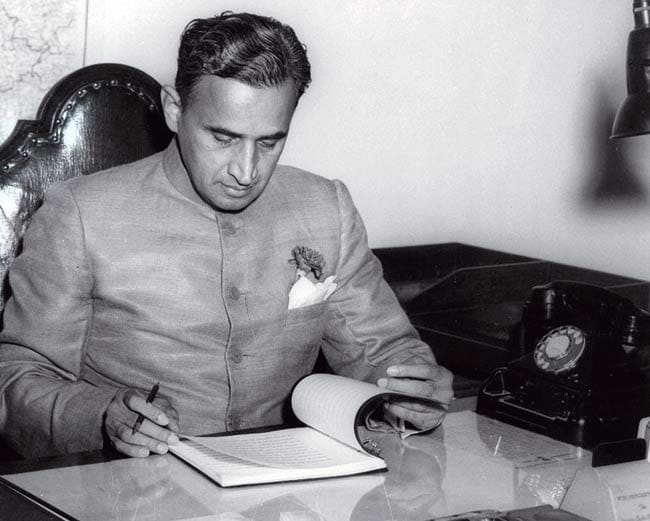
In July, Deshmukh joined the Reserve Bank as a Liaison Officer, soon becoming Secretary to the Board and Deputy Governor in 1941. After Taylor suddenly died in office in February 1943, Deshmukh became Governor in August 1943, the delay explained by the government’s desire to fill the post with another Britisher. Alone at the Governor’s bungalow at No 5, Carmichael Road, barring a few relatives and other visitors, Deshmukh spent time in its garden, which owed much of its original beauty to his personal attention.
This author has never been to the Governor’s residence at Carmichael Road. But, Alaknanda Patel, wife of Late IG Patel, Governor of the Bank for almost five years from 1977 to 1982, described the garden in a personal email as follows:
The Carmichael Road garden was a work of art. It was in several sections including a lower level one for cut flowers. The house itself is very beautiful, the garden complemented it. The long wide veranda outside the drawing room area was full of flowering creepers, designed in such a way that parts of it were open to the sky, part like a covered alcove. There were flowering trees, a whole row of coconut trees lining the wall, a Travellers’ Palm guarding over part of the flower garden, it was exquisite. And if you took walks in different corners you could find a Pomelo tree, laden with fruits. The most gigantic tree was the jackfruit. We got so much that I could not finish them even after distributing to the staff and neighbours. … Before we left Dr. Patel decided to invite the whole of RBI to tea in that garden. Well, the whole did not come , maybe about 2000 did. …
Alaknanda Patel, personal email to the author.
Kiki leaves, and so does Rose
Meanwhile, Louis lost her husband and became increasingly possessive of Kiki. Kiki also had grown distant from her father, who occasionally resorted to the cane. One day, following an argument, Louis walked out with Kiki. Their whereabouts were never known. Letters to known addresses went unacknowledged.
After the War, the couple bought a house in Leigh-on-Sea, near London, named Roha, after Deshmukh’s hometown. It was to be their retirement home. He would visit London on his way back from Washington, attending the Bretton Woods Conference and other meetings. In 1948, sorting out post-Partition sterling balance issues in London, Deshmukh spent weekends at Roha, planting the garden, and doing up the house, preparing for retirement the following year.
As Deshmukh was leaving, Rose had tears in her eyes. Did she have a premonition of what was to come? That it would be their last meeting? While making farewell visits before leaving for England for good, Deshmukh received news that Rose had had a stroke and died soon thereafter. Deshmukh felt that she died pining for her daughter. He returned to England to settle matters, built a marble tombstone for Rose, and sold Roha. Among Rose’s papers, he found all his letters neatly sorted and arranged.
Finance Minister
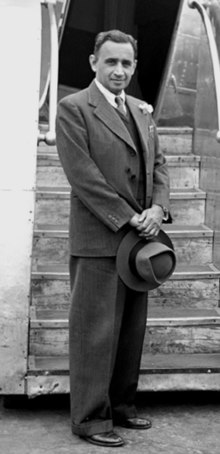
After John Matthai resigned as Finance Minister, Nehru appointed a rather reluctant Deshmukh as Finance Minister and Member Planning Commission in May 1950. His new retirement home in Pune, overlooking the confluence of the Mula and Mutha rivers, was now named “Yojana,” his mind full of planning. Its garden was a botanical museum with rare trees, creepers and shrubs frequented by Botany students from nearby colleges.
Deshmukh’s New Delhi residence at No. 1, Willingdon Crescent, was a five-acre plot with about 350 eucalyptuses, two mango trees, a lily pond, and a rockery. At his expense, he added a penthouse, pergola, and a tulsi brindavan. Among its visitors was Prime Minister Nehru, who made a surprise call on Deshmukh’s 60th birthday. Deshmukh used to spend half an hour in the garden every morning.
The bungalow was among the four designed by Edwin Lutyens, the architect of New Delhi. He had reserved it for his use as a residence. In its gardens in 1930, Cameron Cobbold, a nephew of Lutyens, proposed to Hermione, daughter of Lytton, the Acting Viceroy, in 1925. Cobbold would later become Governor Bank of England from 1949 to 1961 and stay in the same bungalow as a guest of Deshmukh.
Durgabai
One Parliamentarian who greatly impressed Deshmukh was Durgabai for her social work. She was a member of the Constituent Assembly and founded the Andhra Mahila Sabha, among other institutions. Nehru planned to make her a minister to succeed Rajkumari Amrit Kaur. But that was scuttled by her loss in the 1952 Parliament elections. When she planned to move to Madras to pursue her legal career, Nehru appointed Durgabai, at Deshmukh’s suggestion, as a Member of the Planning Commission.
Deshmukh and Durgabai soon became close. One evening in November 1951, after Durgabai had come to meet Dehmukh’s mother, they took a walk in his garden. That was when he revealed his plan to resign from the Planning Commission. Durgabai advised him against it. She felt that his presence was essential for its smooth functioning. He said he was overburdened and tired and asked if she could help. She agreed, to which he said: “You can fill my life.” Durgabai would later recall that she was “flabbergasted” and sought time for a response.
The next evening, after having thought much over it, walking again in the garden of No 1, Willingdon Crescent, Durgabai expressed doubts about their compatibility, she with her ‘rustic manners with no social graces’, and he, ‘suave and westernised.’ In reply, Deshmukh took her to a eucalyptus tree and inscribed two Sanskrit shlokas on its bark, a marriage proposal. She immediately accepted, and he kissed her. At the civil marriage on 22 January 1953, Nehru was the first witness.
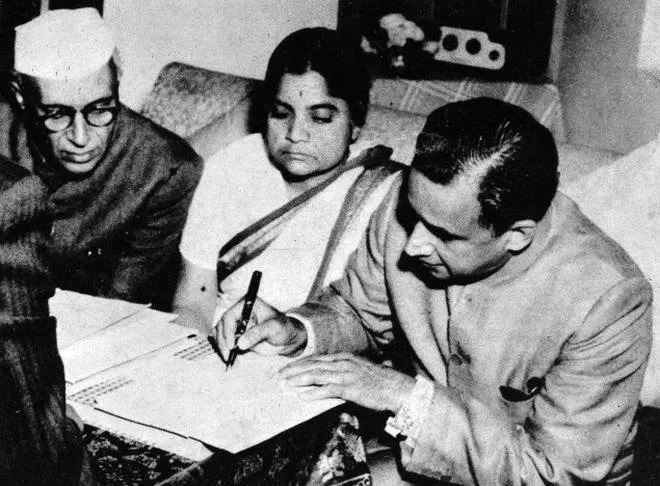
M.O. Mathai, the irrepressible and manipulative Secretary to Nehru, punching his hand with undisguised glee, had wondered who would change who. But, the new couple found common ground developing their garden, cutting down many an environmentally damaging eucalyptus, cultivating wheat, growing vegetables, and planting varieties of mangoes and dozens of orange and lime.
Cultivating many gardens
Deshmukh’s life can be distinctly divided into four. Apart from his early life and education, these were as a civil servant, central banker, finance minister, and the last as an educationist and institution builder. The last stage was no less important than the first three.
In June 1962, when Princeton University conferred an honorary degree on Deshmukh, the citation concluded, ‘A botanist by training and a gardener by avocation, he believes, unlike Candide, in cultivating many gardens.’ The last part of Deshmukh’s autobiography is “Cultivating Many Gardens.” The reference is to the many institutions he built. And also the gardens he nurtured.
At Delhi University, as Vice Chancellor, he extended the area under roses, shifted the nursery to a new location, planted a eucalyptus plantation with seeds given by Zakir Hussain, then Vice President, and planned the paved path and shrubbery around the cricket ground. IG Patel recalled how, with great pride, he showed him the “Tulsi planter” he had designed at Durgabai’s instance at the Vice-Chancellor’s residence.
Their residence in 32 Aurangzeb Road was a sight for passersby, whether on foot or by car, for its lovely garden. When they shifted from there to the Director’s residence at the India International Centre (IIC), the thousands of plants were shifted in several lorries. Alaknanda Patel observes that the garden at the IIC has since fallen into disrepair compared to what it was.
The IIC borders the Lodi Garden, then known as Lady Willingdon’s Garden, to which there is a direct entry from the director’s residence. If each tree in Lodi Garden is now identified with a plate giving its botanical and common names in English and Hindi, Deshmukh might have had a hand in it.
Also receiving his attention were the gardens of the Indian Statistical Institute, where he was President for nearly two decades, the National Council for Applied Economic Research, and the Indian Institute of Public Administration. Another garden he nurtured was in a plot at Maharani Bagh, where he planned to retire. But, he gave in to Durgabai’s wishes and gave up on both Pune and Delhi, deciding to settle down in Hyderabad.
Retirement
They built a new home in Hyderabad, naming it Rachana, or creation. Life continued to be busy. Durgabai passed away in 1981. Deshmukh followed in 1982.
Durgabai, summing up Chintaman’s life, wrote as follows:
No summing of the contribution of Chintaman would be complete without a grateful reference to his service to the dumb millions of trees, shrubs and other species of the plant kingdom which have found in him a friend and an admirer who treated them with the same love and affection that he would have given to his own children.
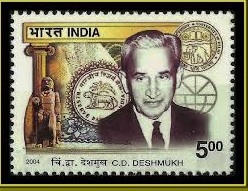
Commemorative stamp for the Deshmukhs
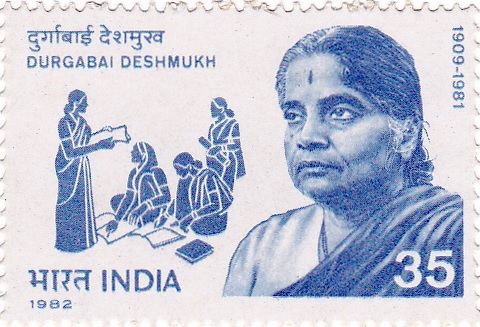
The Deshmukh Chowk in Mumbai never had a great garden. Even if it once had, it might not have lasted long. At least till recently, it housed a public toilet under the Swachh Bharat Mission. But, Rachana, in Hyderabad’s Durgabai Deshmukh Colony, used to draw the attention of passers-by for its large garden, as much for its coconut and mango trees, its jacarandas and flowering creepers, as for its roses and magnolias.
Postscript: 14 January 2021 was CD Deshmukh’s 125th birth anniversary. A much shorter and different version of this article had appeared in the Madras Courier.
© G. Sreekumar 2021.
For periodical updates on all my blog posts, subscribe for free at the link below:
https://gsreekumar.substack.com/
![]()